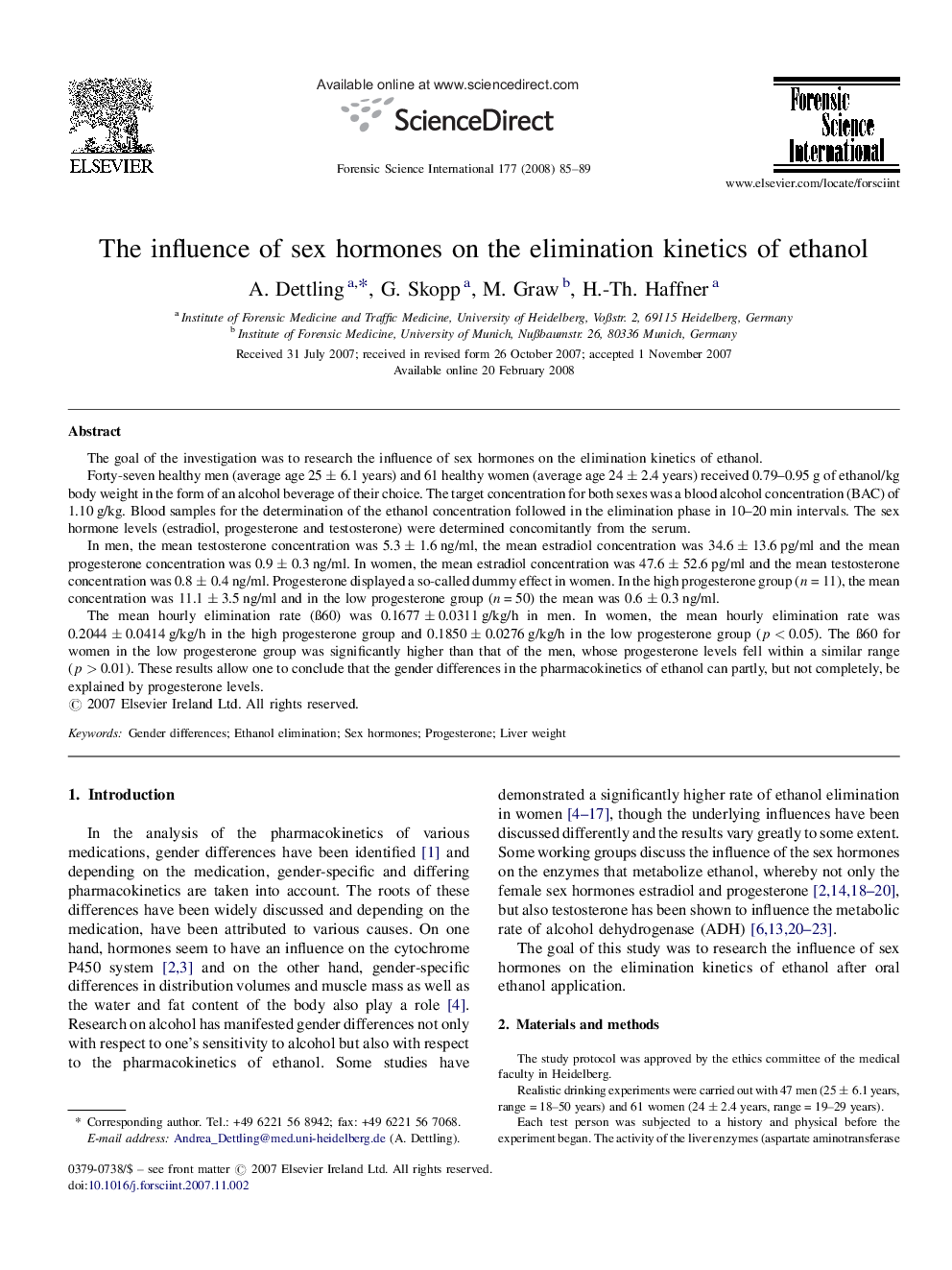| کد مقاله | کد نشریه | سال انتشار | مقاله انگلیسی | نسخه تمام متن |
|---|---|---|---|---|
| 97638 | 160502 | 2008 | 5 صفحه PDF | دانلود رایگان |

The goal of the investigation was to research the influence of sex hormones on the elimination kinetics of ethanol.Forty-seven healthy men (average age 25 ± 6.1 years) and 61 healthy women (average age 24 ± 2.4 years) received 0.79–0.95 g of ethanol/kg body weight in the form of an alcohol beverage of their choice. The target concentration for both sexes was a blood alcohol concentration (BAC) of 1.10 g/kg. Blood samples for the determination of the ethanol concentration followed in the elimination phase in 10–20 min intervals. The sex hormone levels (estradiol, progesterone and testosterone) were determined concomitantly from the serum.In men, the mean testosterone concentration was 5.3 ± 1.6 ng/ml, the mean estradiol concentration was 34.6 ± 13.6 pg/ml and the mean progesterone concentration was 0.9 ± 0.3 ng/ml. In women, the mean estradiol concentration was 47.6 ± 52.6 pg/ml and the mean testosterone concentration was 0.8 ± 0.4 ng/ml. Progesterone displayed a so-called dummy effect in women. In the high progesterone group (n = 11), the mean concentration was 11.1 ± 3.5 ng/ml and in the low progesterone group (n = 50) the mean was 0.6 ± 0.3 ng/ml.The mean hourly elimination rate (ß60) was 0.1677 ± 0.0311 g/kg/h in men. In women, the mean hourly elimination rate was 0.2044 ± 0.0414 g/kg/h in the high progesterone group and 0.1850 ± 0.0276 g/kg/h in the low progesterone group (p < 0.05). The ß60 for women in the low progesterone group was significantly higher than that of the men, whose progesterone levels fell within a similar range (p > 0.01). These results allow one to conclude that the gender differences in the pharmacokinetics of ethanol can partly, but not completely, be explained by progesterone levels.
Journal: Forensic Science International - Volume 177, Issues 2–3, 20 May 2008, Pages 85–89